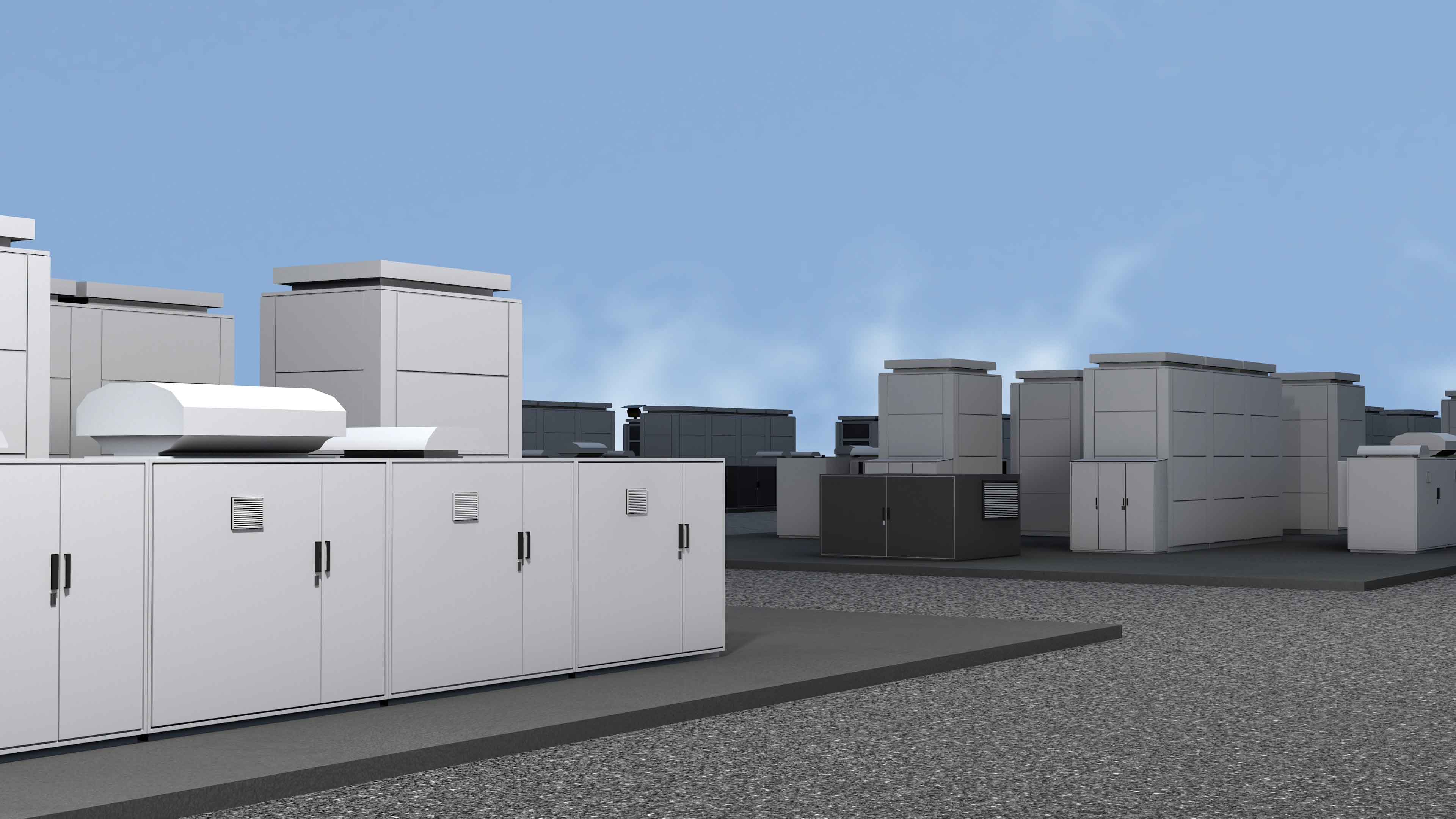How to Seize Storage Market Opportunities while Balancing Environmental & Engineering challenges
 Rapidly advancing technologies and improving cost effectiveness are pushing U.S. utilities and developers to look to energy storage as a solution to grid resiliency and efficiency. Grid disruption from events like natural disasters, extreme weather conditions, and operational errors cost almost $100 billion dollars annually, according to insurance industry estimates. The technological advances in batteries, flywheels, compressed air, thermal, and pumped hydro storage are changing the way electricity is delivered.
Rapidly advancing technologies and improving cost effectiveness are pushing U.S. utilities and developers to look to energy storage as a solution to grid resiliency and efficiency. Grid disruption from events like natural disasters, extreme weather conditions, and operational errors cost almost $100 billion dollars annually, according to insurance industry estimates. The technological advances in batteries, flywheels, compressed air, thermal, and pumped hydro storage are changing the way electricity is delivered.
According to the Energy Storage Association (ESA), energy storage systems currently make up roughly 2 percent of U.S. generation capacity, with systems in operation or in development in nearly every state. In a recent presentation, ESA projected that the U.S. can expect to have 35GW of energy storage by 2025, which translates into $27 billion in reliability savings, and $4 billion in operational savings for the electric grid.
The US Department of Energy estimates 95 percent of the 22.6GW of energy storage currently deployed is pumped hydro storage, a relatively mature technology. The advancement of battery energy storage technologies in the early adopter stage - such as lithium ion, nickel-based, and flow batteries - are changing the conversation. They now account for approximately 600MW of the total energy storage capacity.
Progress is happening quickly, with Federal Energy Regulatory Commission (FERC) Order 841 removing barriers to entry for energy storage participation in the capacity, energy, and ancillary markets operated by Regional Transmission Organizations (RTO) and Independent System Operators (ISO). Demand continues for baseline pricing around wholesale markets where the value has historically been low, but countervailing trends and indicators (spurred by Order 841) show that storage value is on the rise. Rules with objective reliability and performance metrics are needed for capacity markets, where there may be regulatory risks. ISOs and RTOs need to continue integrating storage as part of their rules; a firmer understanding of the value will follow.
 An important economic policy tool for energy storage is the IRS interpretation of the Investment Tax Credit (ITC) and its application to utility scale energy storage projects. According to the National Renewable Energy Laboratory (NREL), the IRS ruled that a minimum of the 75 percent of the energy stored is required to originate from an electric generation source that qualifies for the ITC, such as solar, wind, or fuel cells. The amount of the tax credit is proportional to the percentage of energy originating from this qualifying generation source.
An important economic policy tool for energy storage is the IRS interpretation of the Investment Tax Credit (ITC) and its application to utility scale energy storage projects. According to the National Renewable Energy Laboratory (NREL), the IRS ruled that a minimum of the 75 percent of the energy stored is required to originate from an electric generation source that qualifies for the ITC, such as solar, wind, or fuel cells. The amount of the tax credit is proportional to the percentage of energy originating from this qualifying generation source.
Current market conditions make this a unique opportunity. The majority of the energy storage deployment is expected to be utility scale and front of the meter, with the remainder being commercially implemented behind the meter.
Successfully developing and implementing large-scale storage projects, however, requires attention to several engineering and environmental challenges.
Engineering Challenges
While energy storage facilities have some unique needs, they share many of the same challenges as other power generation projects. Here are some important aspects to keep in mind:
- Due diligence and siting:Energy storage evaluation, new risk scenarios and screening evaluations are needed to provide locations of resources and transfers to distribution.
- Design:Preliminary design drawings must follow local specifications, and cover existing and proposed site plans and details. Plant design considerations include cost estimates; performance predictions; grid interconnections; transmission and distribution engineering; substation engineering design; and capacity analysis.
- Infrastructure:Stormwater management engineering must account for NPDES permitting, site grading and soil erosion, and sediment control approvals. Other important areas include geotechnical and soils assessments; civil roadway and drainage design; SWPP development; and security.
- Interconnection:Utility considerations to front-of-the-meter energy storage projects include modeling storage deployments; identifying location feeders and storage distribution needs; voltage regulation; capacity deferral; phase balancing; and identifying time series constraints and constraint profiles. The associated power flow analysis and time series objectives help establish the value for the system and the associated economics. Utilities require an understanding of thermal and protection constraints of lines; phase and current voltage consistency; DR hosting capacity and reverse power flow; and if premium power scenarios can be offered.
Environmental challenges
Likewise, there are also complex environmental considerations for energy storage facilities, including:
- Regulatory issues:In addition to identifying local regulatory requirements, applicable regulatory regimes for project sites must be documented. This includes determining which agencies are required to review the project, and which permits and approvals are necessary. Examples include nationwide permits from the U.S. Army Corps of Engineers, freshwater and/or tidal wetland permits from State Departments of Environmental Conservation or Protection and regional requirements. Permitting schedules must be prepared for each site to assist in the determination of planned commercial operation dates.
- Siting and land use:When brownfields or retired coal and mining facilities are considered for siting of energy storage, it is critical to understand the current environmental status of the site, and properly coordinate with the proper authorities.Due diligence can be completed through resource mapping, and review of GIS databases and aerial photography, to identify sensitive environmental resources including wetlands, protected habitats, floodplains, and historic/culturally significant sites. An inventory of the nearest sensitive receptors to each potential site, such as schools, hospitals, and residential areas, is also important. A preliminary land use assessment is also needed to document applicable zoning and local code requirements. Research into relevant zoning items must consider zoning designations, permitted uses, dimensional requirements, and the potential need for variances. Typically, a review of local codes is conducted to determine other applicable ordinances that would impact the development of a site. Examples include noise requirements, aquifer protection zones, and natural resources protection codes.
These challenges may seem daunting, but they're nothing new to utilities and power project developers that have executed large projects over the last 25 years. The robust market for energy storage all but ensures that any capital projects undertaken will quickly pay for themselves in the short term, and provide benefits over the long term.
Rob Jackson is National Market Director for Solar Power/Energy Storage at TRC. He has been involved with many firsts in the renewable energy industry, with experience in business development, energy and environmental policy, economics, due diligence assessment, permitting and design for renewable energy development. He also has broad experience in stakeholder negotiations and agency communication and is an expert in contractor procurement including processes involving contract negotiations, bidding and constructionmanagement. He is also a registered professional engineer in the Commonwealth of Massachusetts.
TRC | www.trcsolutions.com
Volume: 2018 May/June







